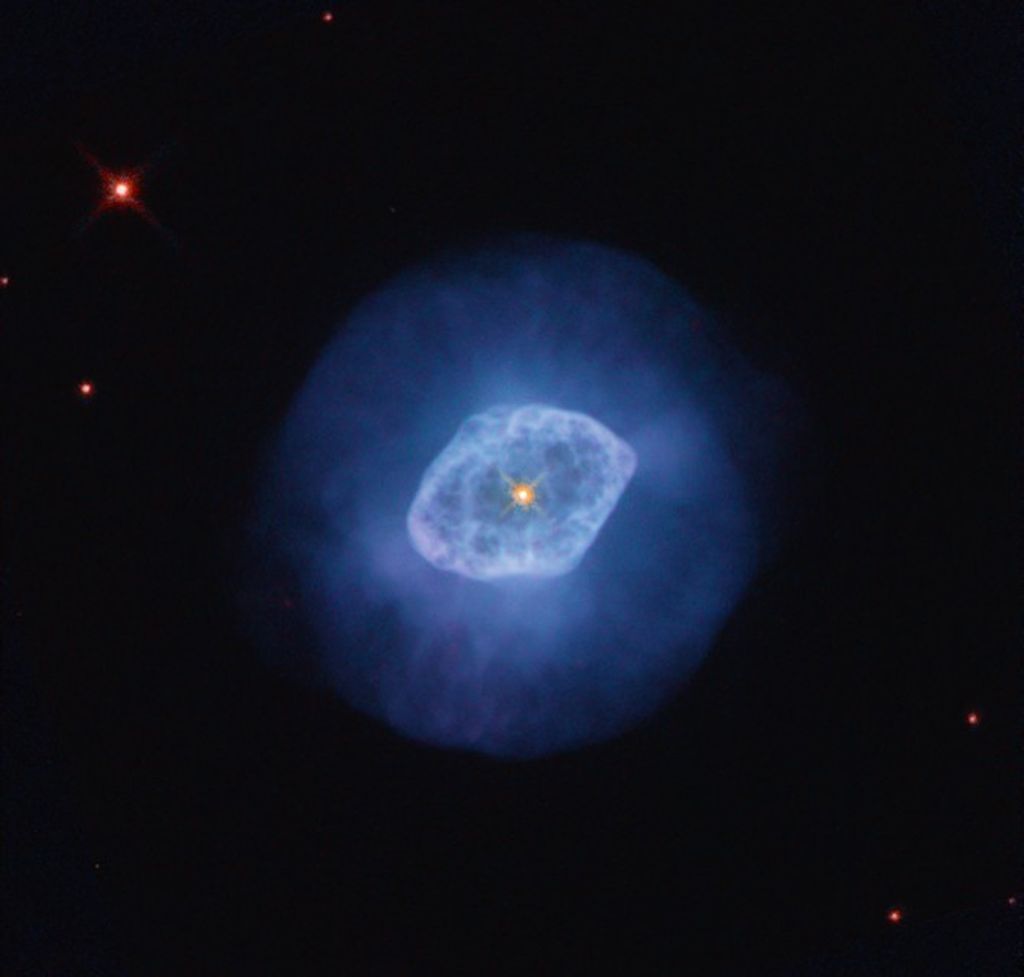1 min read
Stephan’s Quintet (MIRI Compass Image)
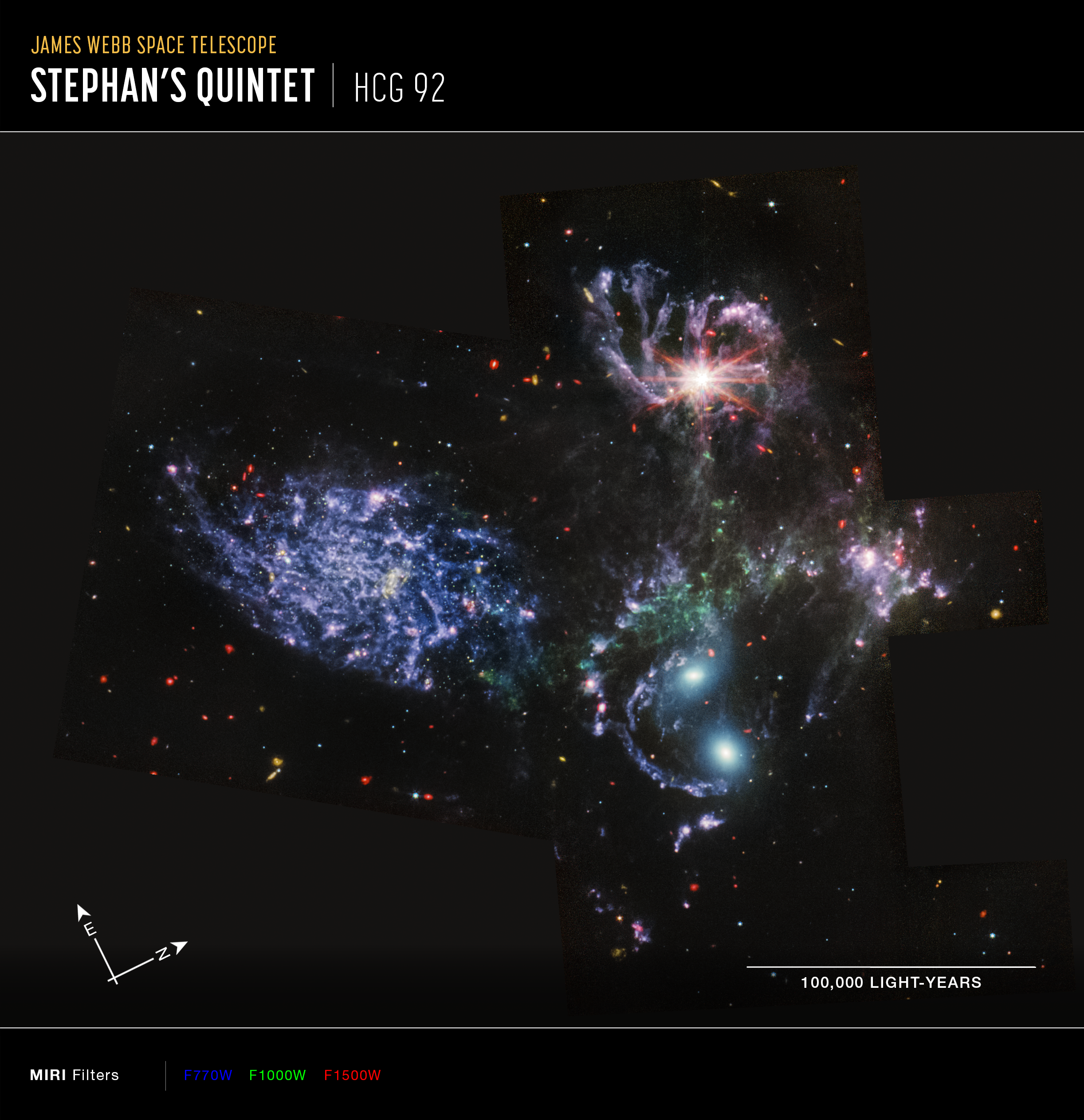
Image of Stephan's Quintet, HCG 92, captured by Webb’s Mid-Infrared Instrument (MIRI), with compass arrows, scale bar, and color key for reference.
The north and east compass arrows show the orientation of the image on the sky. Note that the relationship between north and east on the sky (as seen from below) is flipped relative to direction arrows on a map of the ground (as seen from above).
The scale bar is labeled in light-years, which is the distance that light travels in one Earth-year. (It takes 100,000 years for light to travel a distance equal to the length of the bar.) One light-year is equal to about 5.88 trillion miles or 9.46 trillion kilometers. The field of view shown in this image is approximately 370,000 light-years across.
This image shows invisible mid-infrared wavelengths of light that have been translated into visible-light colors. The color key shows which MIRI filters were used when collecting the light. The color of each filter name is the visible light color used to represent the infrared light that passes through that filter.
Extended Description and Image Alt Text
Extended Description
Image titled “James Webb Space Telescope; Stephan’s Quintet HCG 92,” with compass arrows, scale bar, and color key.
Image
Image of a group of four galaxies that appear close to each other in the sky: two in the middle, one toward the top, one to the upper left. In addition, there is a large bright patch toward the right. The galaxy at the top has a bright reddish core and is surrounded by swirls of blue and purple filaments that travel inward to its bright core, also highlighted by eight diffraction spikes. The galaxy on the left is a mass of purple gas surrounding a dim red core. The mass is made from small clumps, each slightly illuminated. The two galaxies in the middle have two bright, blue cores, surrounded by purple wisps. The bright patch to the right is made from clouds of blue and purple, strung together in filament-like bands. Surrounding the galaxies is a background peppered with red, blue, and purple dots, which are distant stars and galaxies. The shape of the image itself is irregular, like a number of squares of different sizes overlapping each other. The image has the same scale and orientation as the NIRCam/MIRI composite image, but it does not include the elliptical galaxy at the bottom of the group.
Compass Arrows, Scale Bar, and Color Key
At the bottom left are compass arrows indicating the orientation of the image on the sky. The north arrow points in the 2 o’clock direction. The east arrow points toward 11 o’clock. At the lower right is a scale bar labeled 100,000 light-years. The length of the scale bar is between one-quarter and one-third of the total width of the image. Below the image is a color key showing which MIRI filters were used to create the image and which visible-light color is assigned to each filter. From left to right: F770W is blue; F1000W is green; and F1500W is red.
Image Alt Text
Colorful image of the mid-infrared light of a group of galaxies, with compass arrows, scale bar, and color key.
About the Object
- R.A. PositionR.A. PositionRight ascension – analogous to longitude – is one component of an object's position.22:35:57.49
- Dec. PositionDec. PositionDeclination – analogous to latitude – is one component of an object's position.33:57:36.0
- ConstellationConstellationOne of 88 recognized regions of the celestial sphere in which the object appears.Pegasus
- DistanceDistanceThe physical distance from Earth to the astronomical object. Distances within our solar system are usually measured in Astronomical Units (AU). Distances between stars are usually measured in light-years. Interstellar distances can also be measured in parsecs.290 million light-years (89 million parsecs)
- DimensionsDimensionsThe physical size of the object or the apparent angle it subtends on the sky.Image is about 4.5 arcmin across (about 370,000 light-years)
About the Data
- Data DescriptionData DescriptionProposal: A description of the observations, their scientific justification, and the links to the data available in the science archive.
Science Team: The astronomers who planned the observations and analyzed the data. "PI" refers to the Principal Investigator.This image was created with Webb data from proposal 2732. It is part of Webb Early Release Observations.
The Early Release Observations and associated materials were developed, executed, and compiled by the ERO production team:
Jaclyn Barrientes, Claire Blome, Hannah Braun, Matthew Brown, Margaret Carruthers, Dan Coe, Joseph DePasquale, Nestor Espinoza, Macarena Garcia Marin, Karl Gordon, Alaina Henry, Leah Hustak, Andi James, Ann Jenkins, Anton Koekemoer, Stephanie LaMassa, David Law, Alexandra Lockwood, Amaya Moro-Martin, Susan Mullally, Alyssa Pagan, Dani Player, Klaus Pontoppidan, Charles Proffitt, Christine Pulliam, Leah Ramsay, Swara Ravindranath, Neill Reid, Massimo Robberto, Elena Sabbi, Leonardo Ubeda.
The EROs were also made possible by the foundational efforts and support from the JWST instruments, STScI planning and scheduling, Data Management teams, and Office of Public Outreach.
- InstrumentInstrumentThe science instrument used to produce the data.MIRI
- Exposure DatesExposure DatesThe date(s) that the telescope made its observations and the total exposure time.11-12 June, 1 July 2022
- FiltersFiltersThe camera filters that were used in the science observations.F770W, F1000W, F1500W
- Object NameObject NameA name or catalog number that astronomers use to identify an astronomical object.Stephan’s Quintet, Hickson Compact Group (HCG) 92, NGC 7318A, NGC 7318B, NGC 7319, NGC 7320
- Object DescriptionObject DescriptionThe type of astronomical object.Interacting Galaxy Group
- Release DateJuly 12, 2022
- Science ReleaseNASA’s Webb Sheds Light on Galaxy Evolution, Black Holes
- CreditImage: NASA, ESA, CSA, STScI

These images are a composite of separate exposures acquired by the James Webb Space Telescope using the MIRI instrument. Several filters were used to sample broad wavelength ranges. The color results from assigning different hues (colors) to each monochromatic (grayscale) image associated with an individual filter. In this case, the assigned colors are: Red: F1500W Green: F1000W Blue: F770W
Related Images & Videos
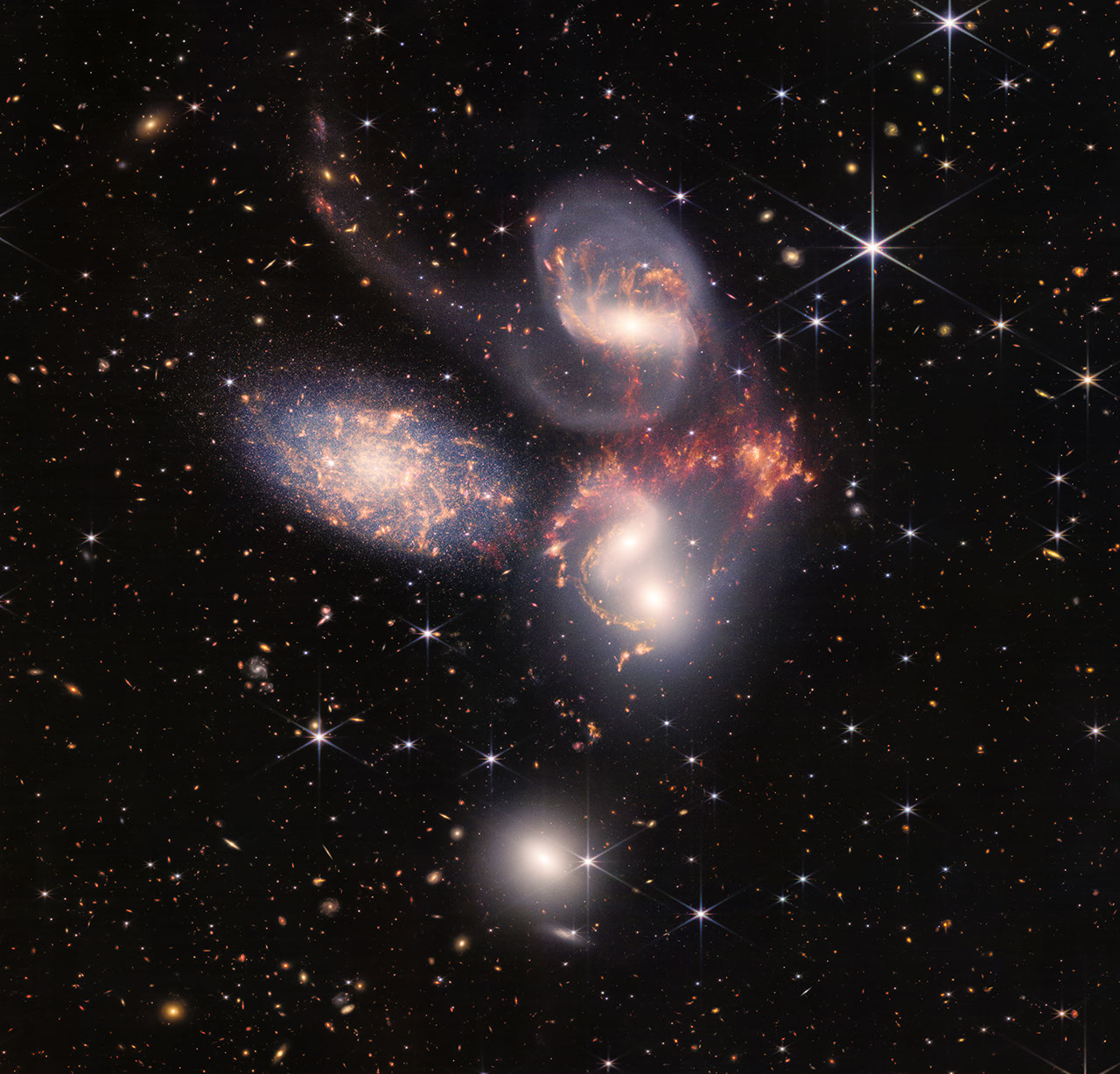
Stephan's Quintet (NIRCam and MIRI Composite Image)
An enormous mosaic of Stephan’s Quintet is the largest image to date from NASA’s James Webb Space Telescope, covering about one-fifth of the Moon’s diameter. It contains over 150 million pixels and is constructed from almost 1,000 separate image files. The visual grouping of...
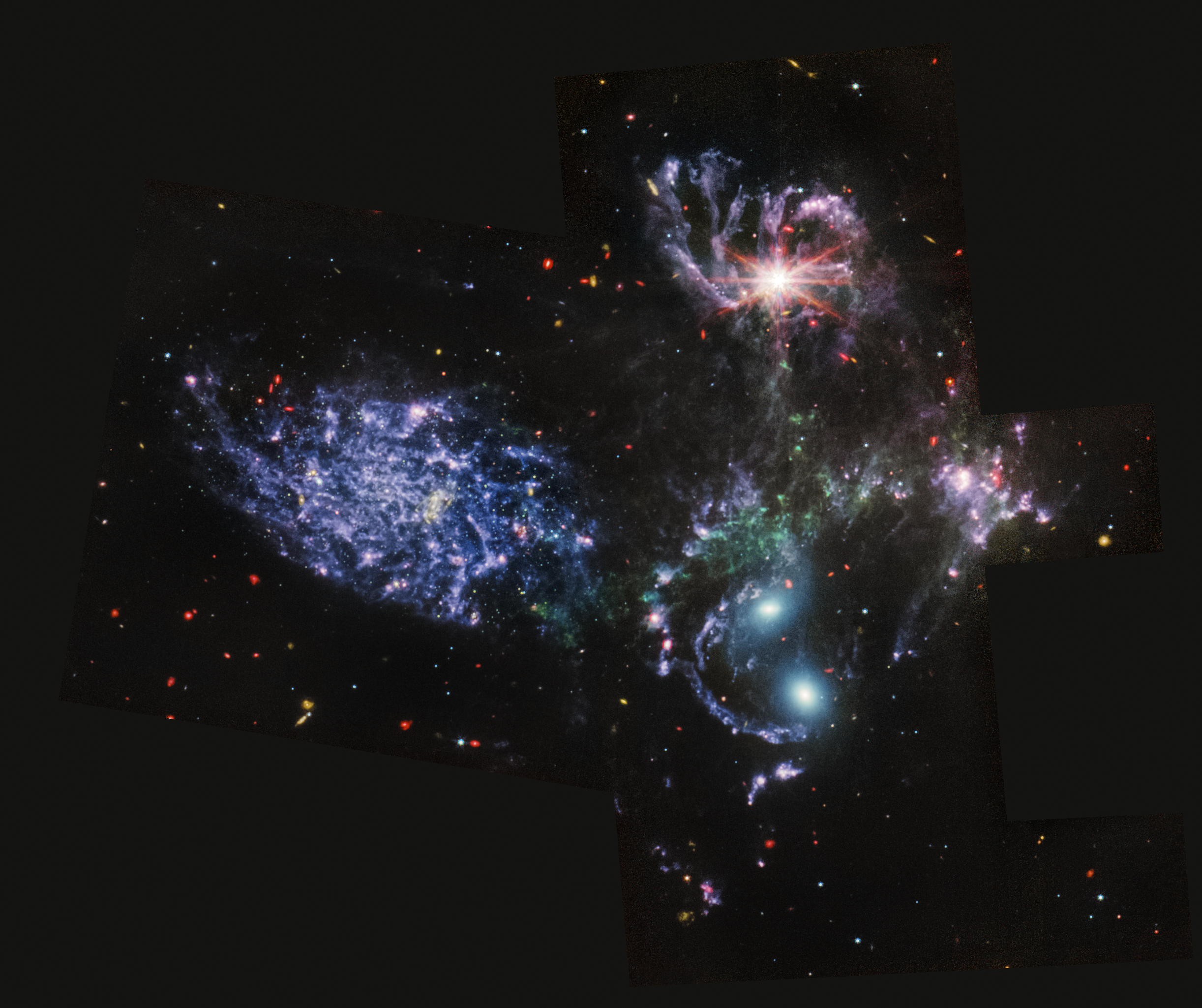
Stephan's Quintet (MIRI Image)
With its powerful, mid-infrared vision, the Mid-Infrared Instrument (MIRI) shows never-before-seen details of Stephan’s Quintet, a visual grouping of five galaxies. MIRI pierced through dust-enshrouded regions to reveal huge shock waves and tidal tails, gas and stars stripped...
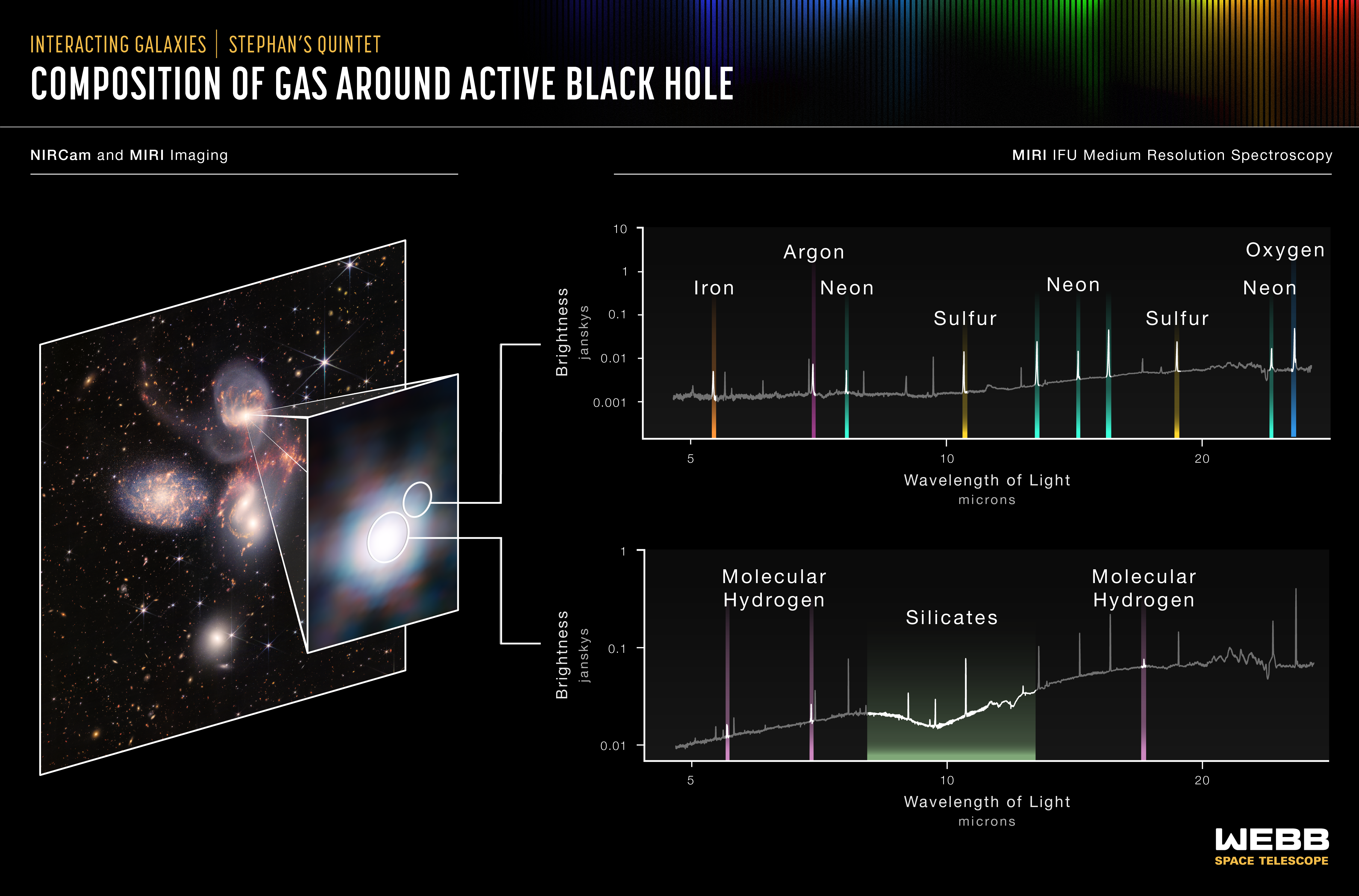
Stephan's Quintet (MIRI Spectra)
Stephan’s Quintet is a visual grouping of five galaxies located in the constellation Pegasus. Together, they are also known as the Hickson Compact Group 92 (HCG 92). Although called a “quintet,” only four of the galaxies are truly close together and caught up in a cosmic dance....
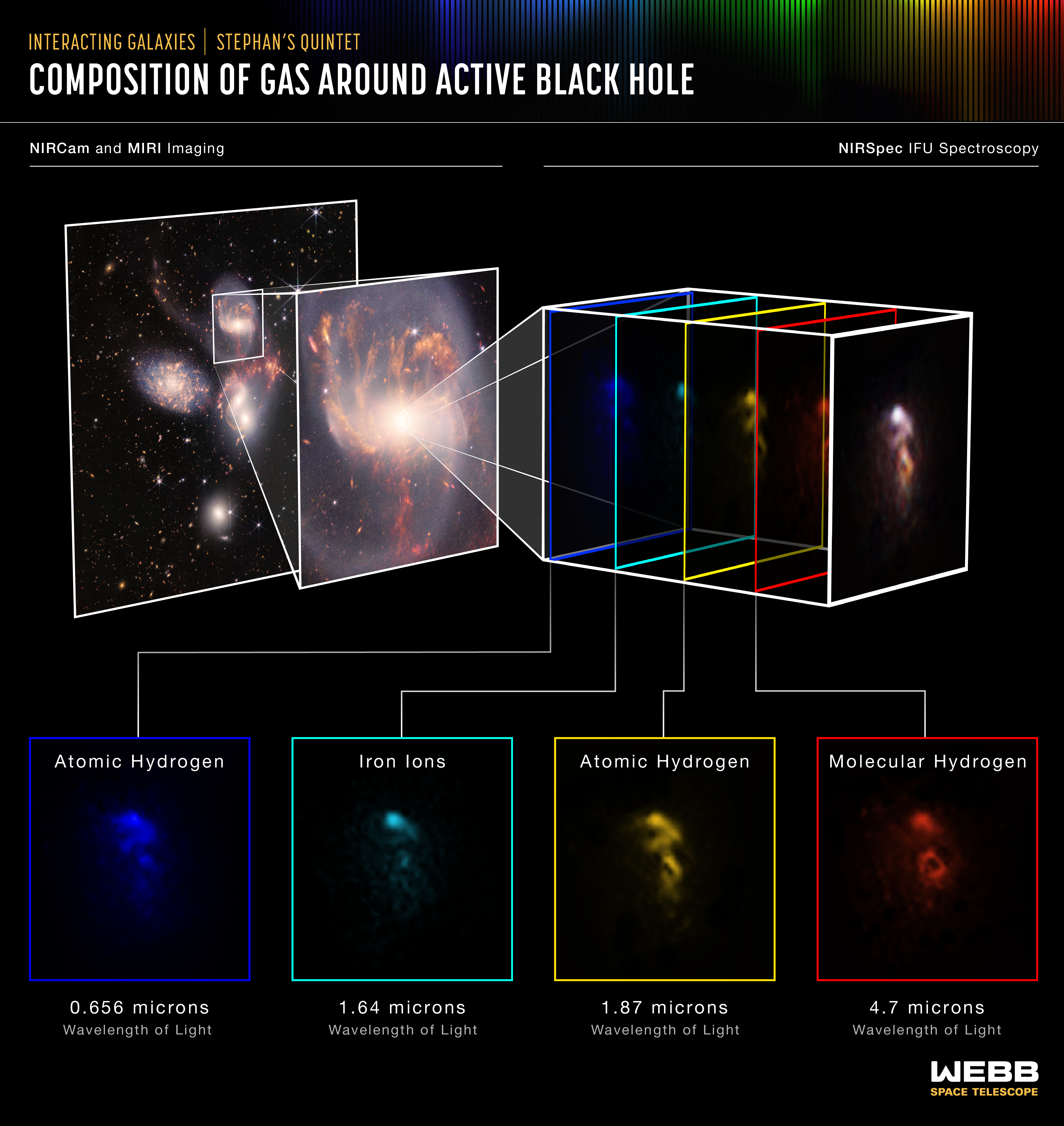
Stephan's Quintet (NIRSpec IFU)
Stephan’s Quintet is a visual grouping of five galaxies located in the constellation Pegasus. Together, they are also known as the Hickson Compact Group 92 (HCG 92). Although called a “quintet,” only four of the galaxies are truly close together and caught up in a cosmic dance....
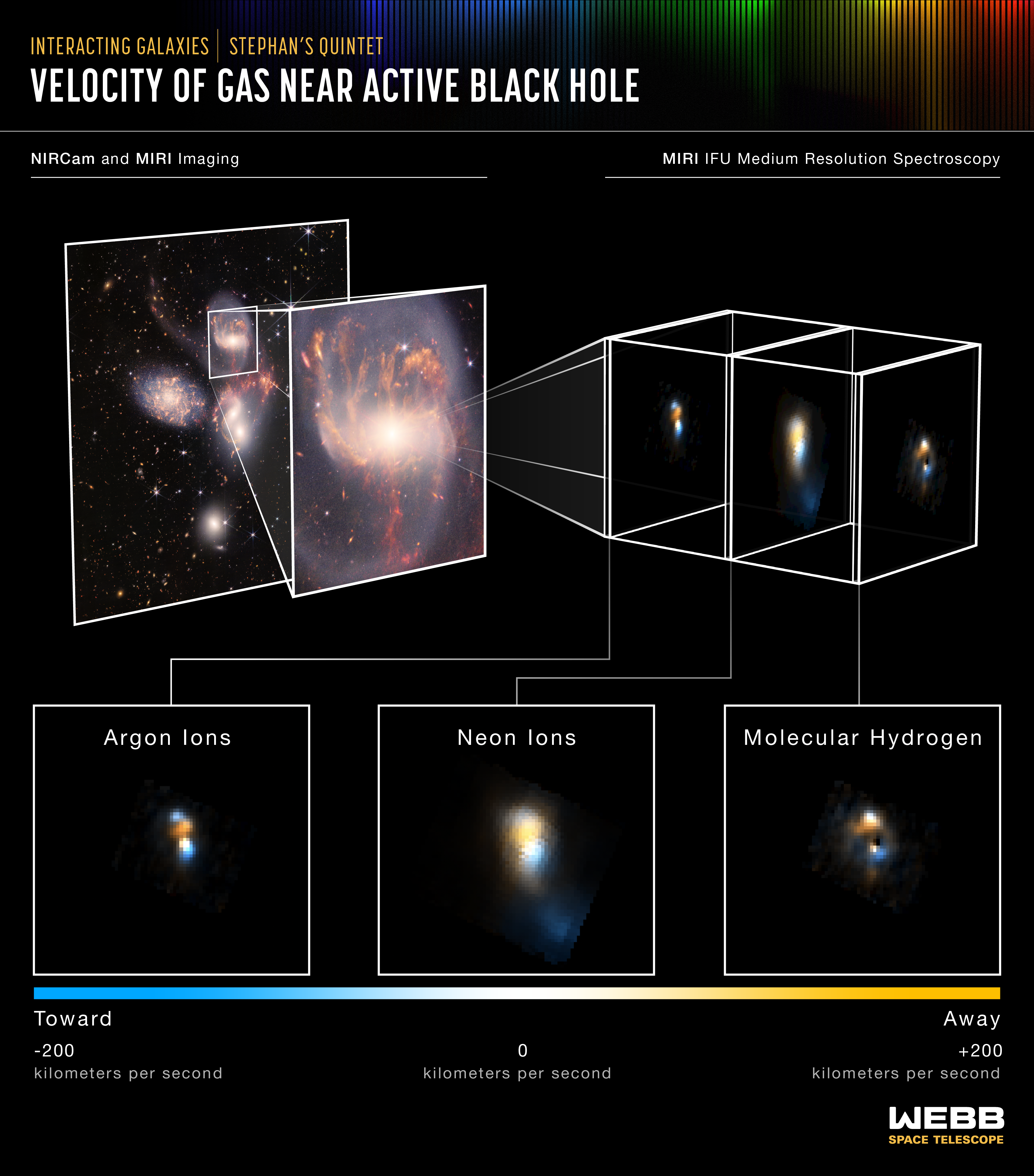
Stephan's Quintet (MIRI IFU)
Stephan’s Quintet is a visual grouping of five galaxies located in the constellation Pegasus. Together, they are also known as the Hickson Compact Group 92 (HCG 92). Although called a “quintet,” only four of the galaxies are truly close together and caught up in a cosmic dance....
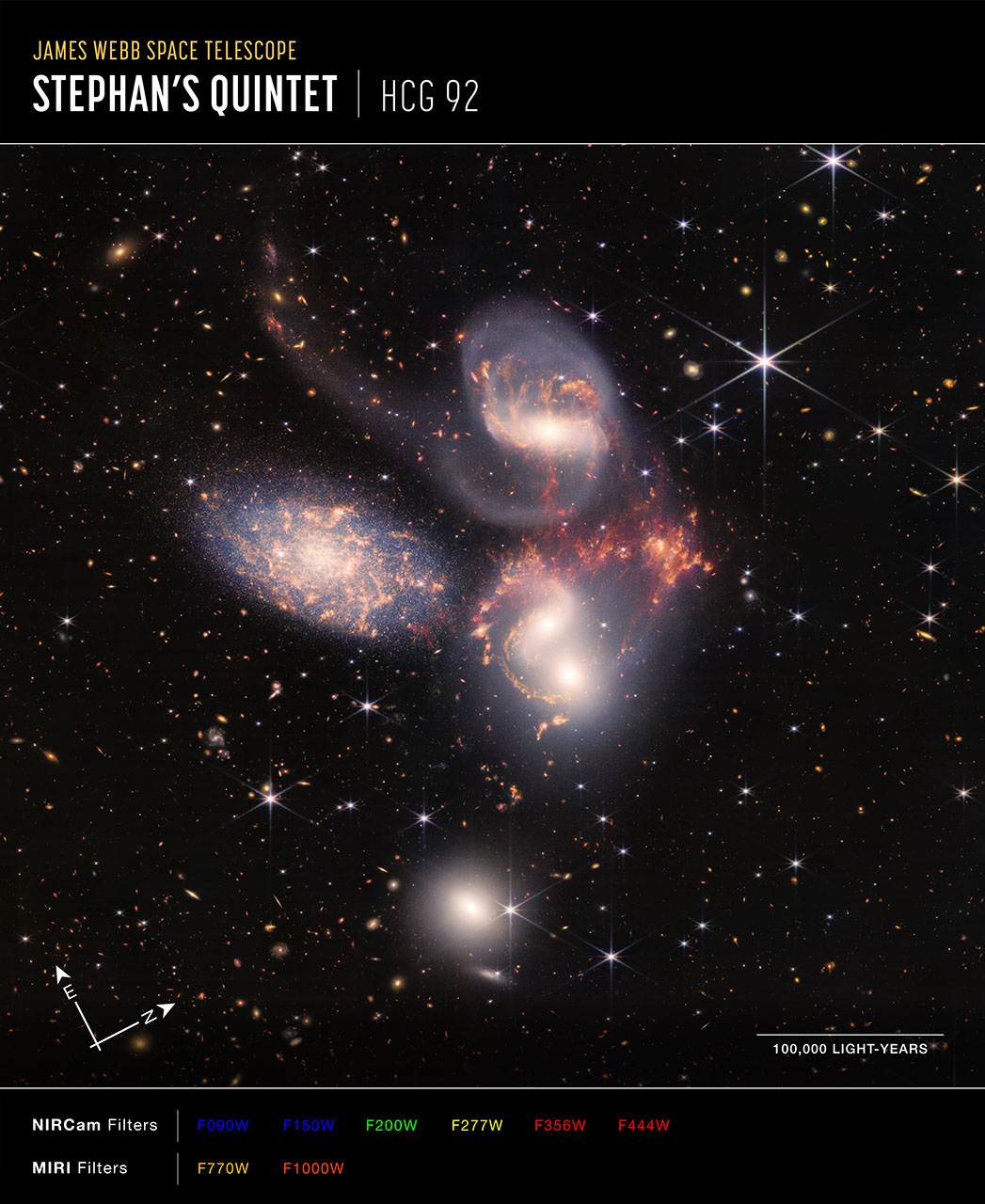
Stephan's Quintet (NIRCam and MIRI Composite Compass Image)
Image of Stephan's Quintet, HCG 92, captured by Webb’s Near-Infrared Camera (NIRCam) and Mid-Infrared Instrument (MIRI), with compass arrows, scale bar, and color key for reference. The north and east compass arrows show the orientation of the image on the sky. Note that the...
Share
Details
Laura Betz
NASA’s Goddard Space Flight Center
Greenbelt, Maryland
laura.e.betz@nasa.gov
NASA, ESA, CSA, STScI
















